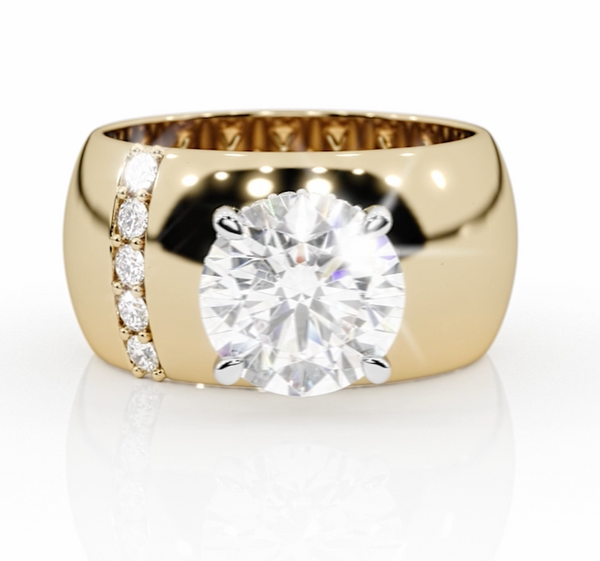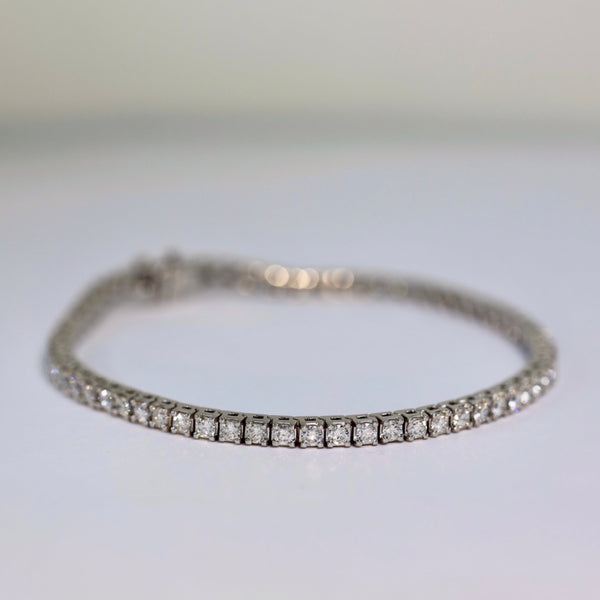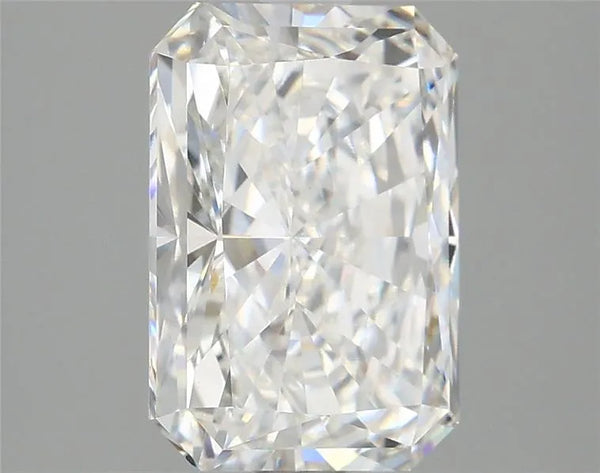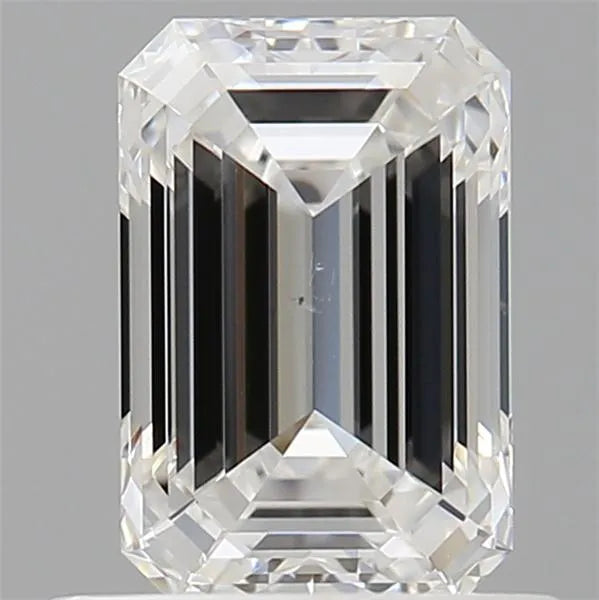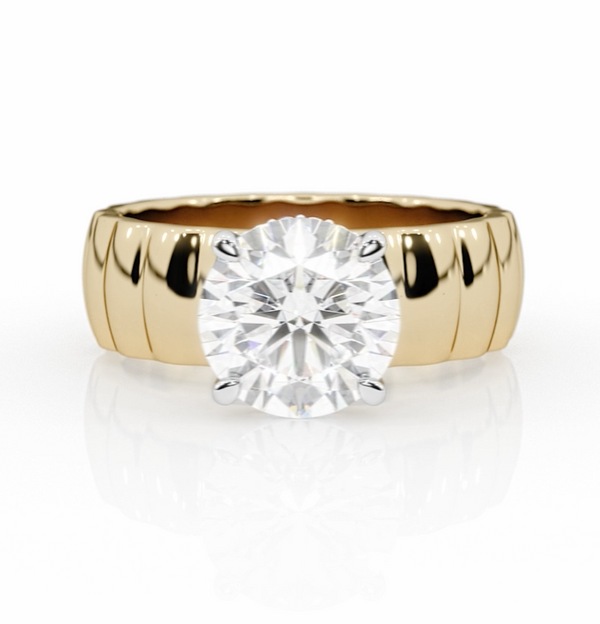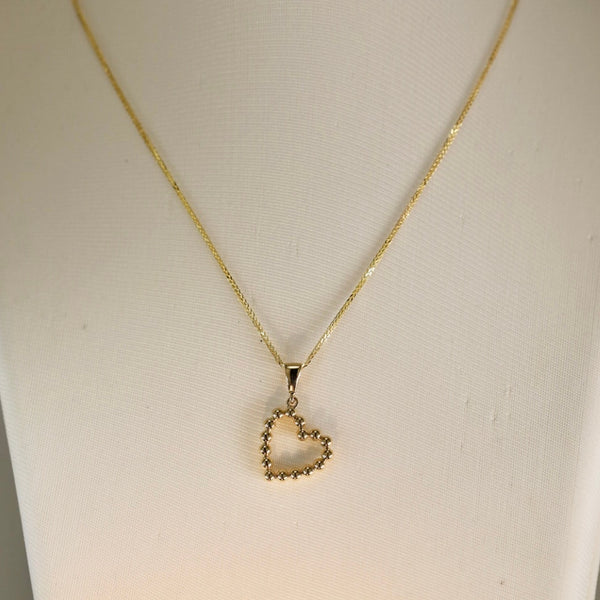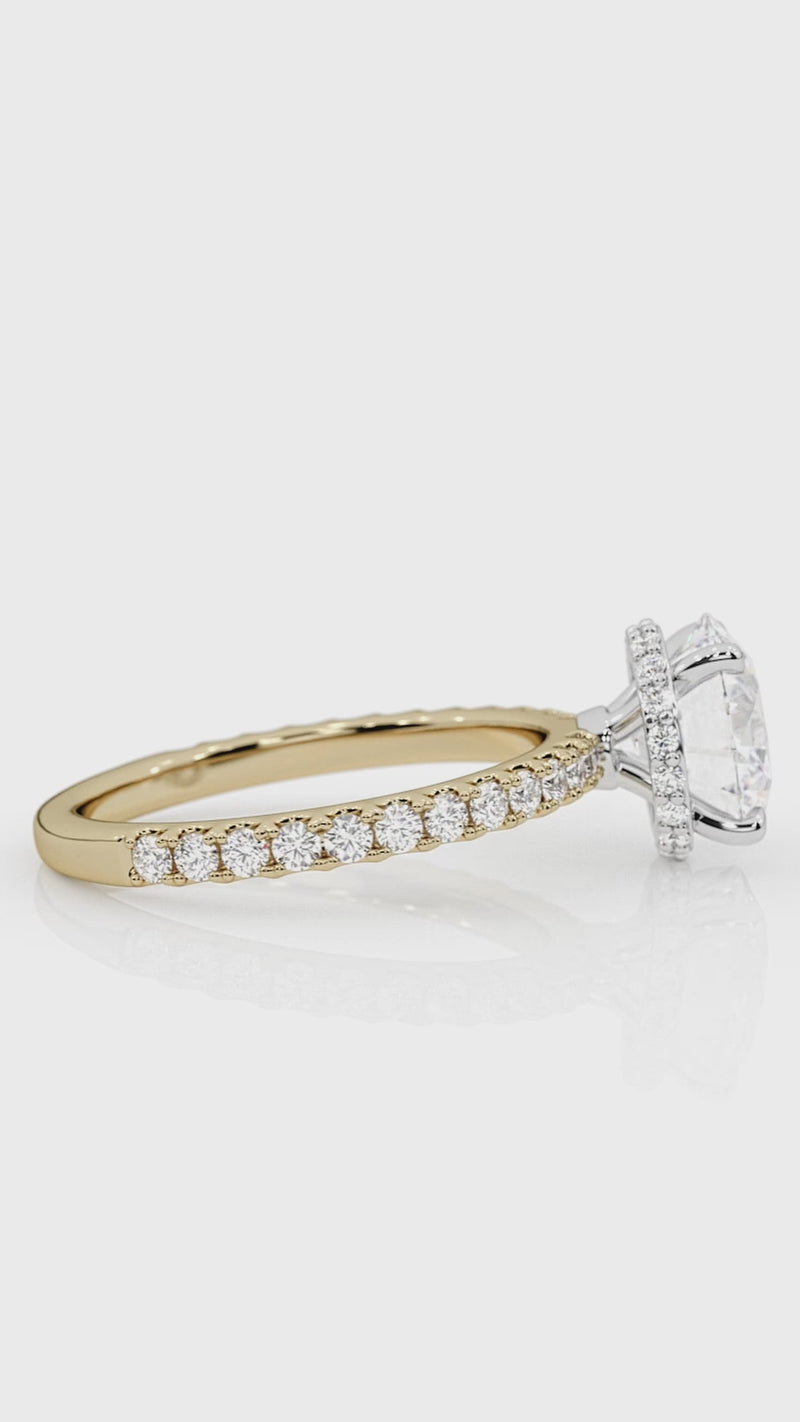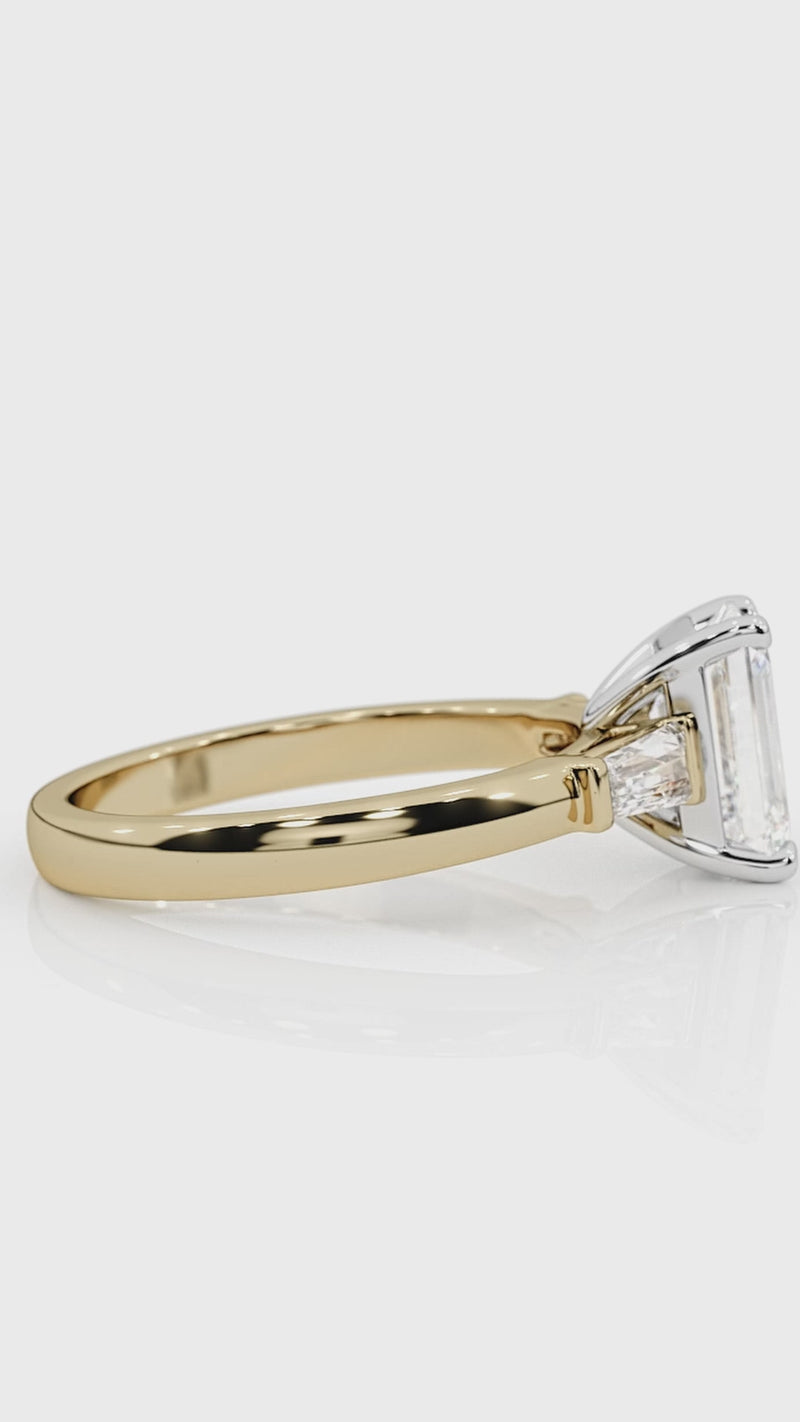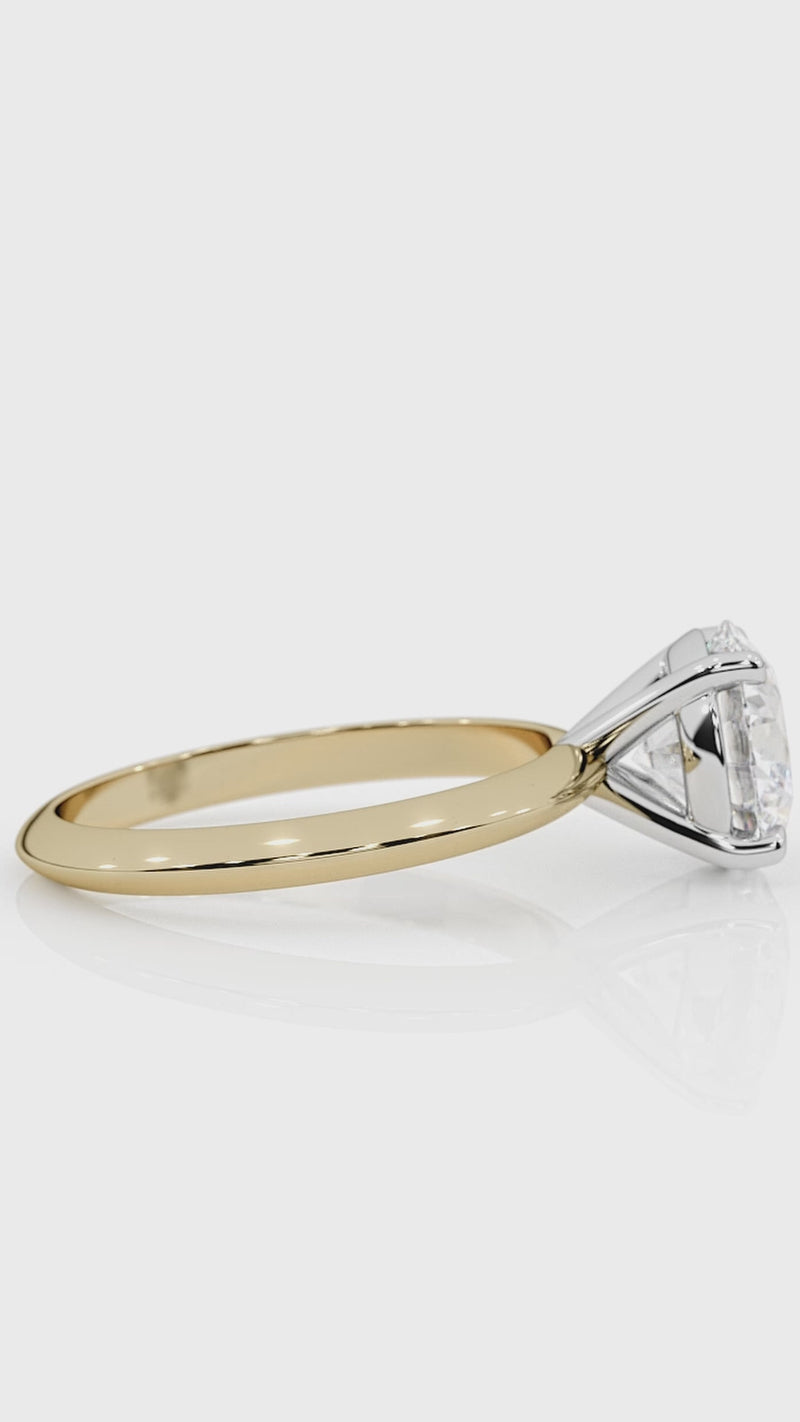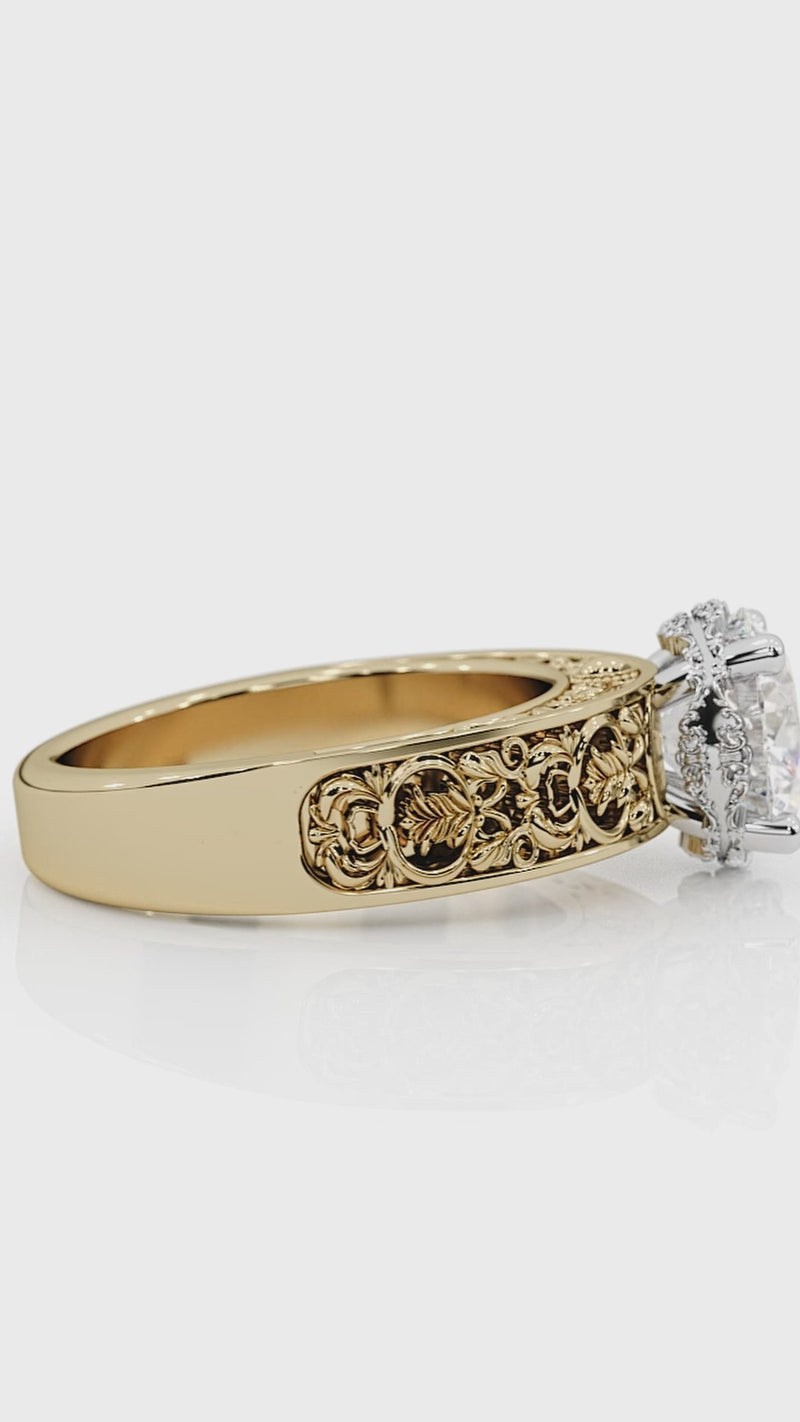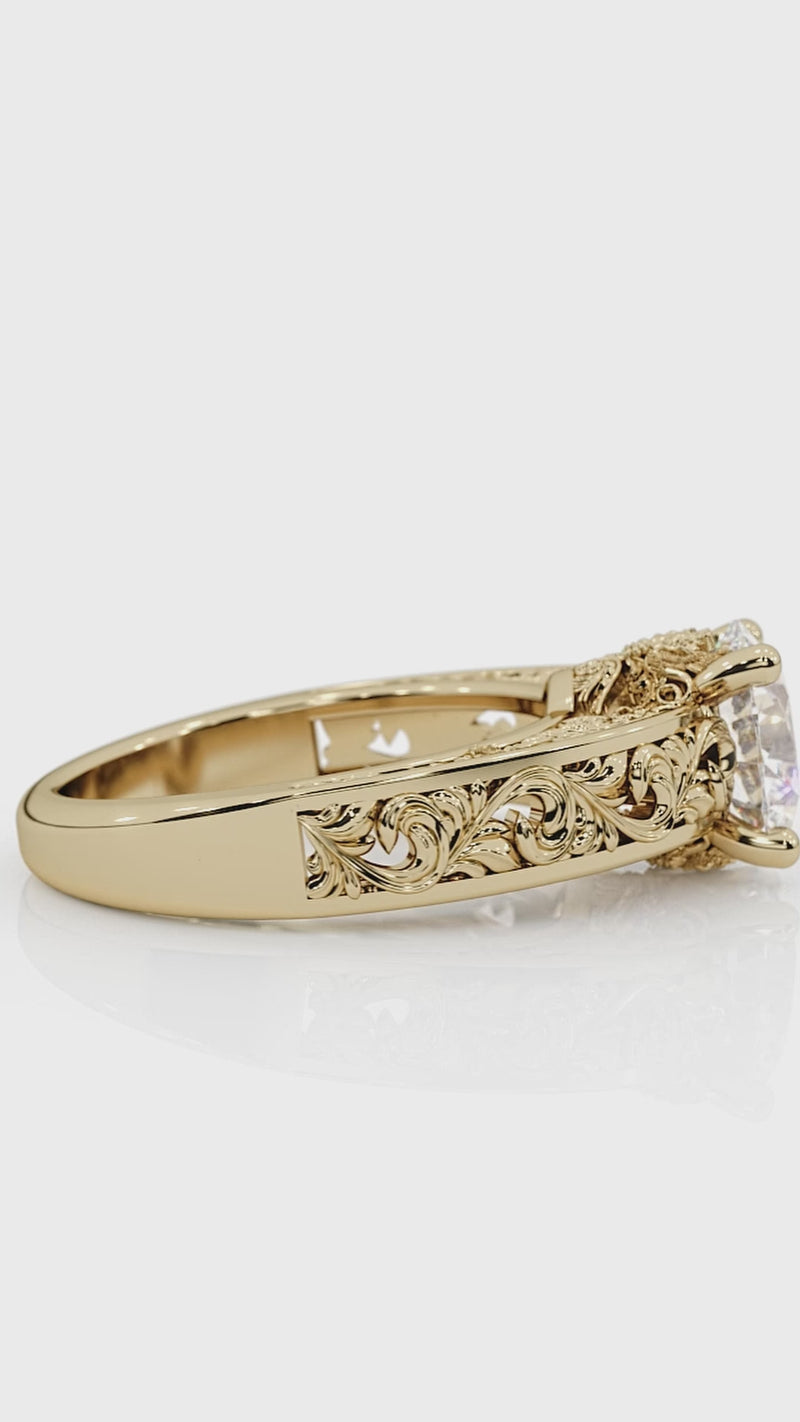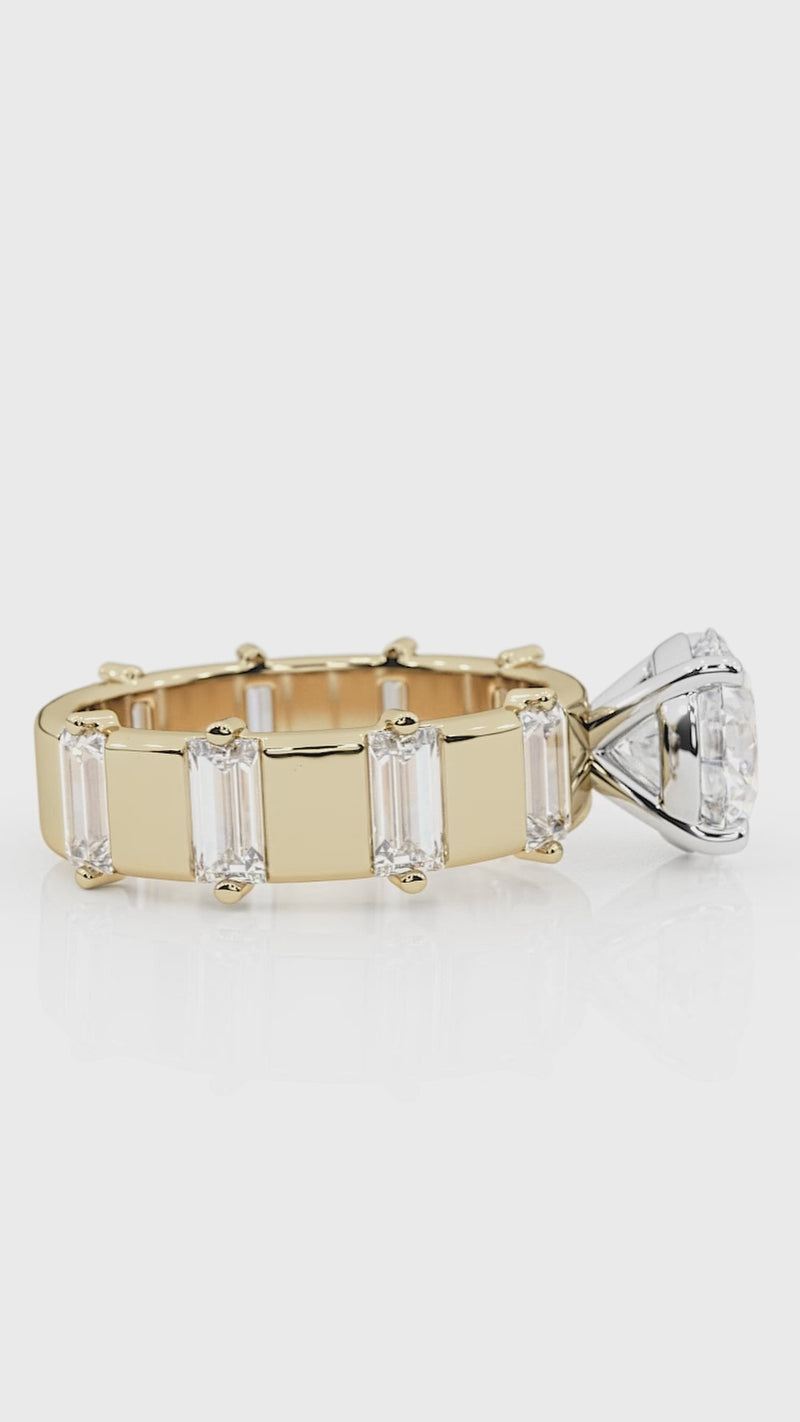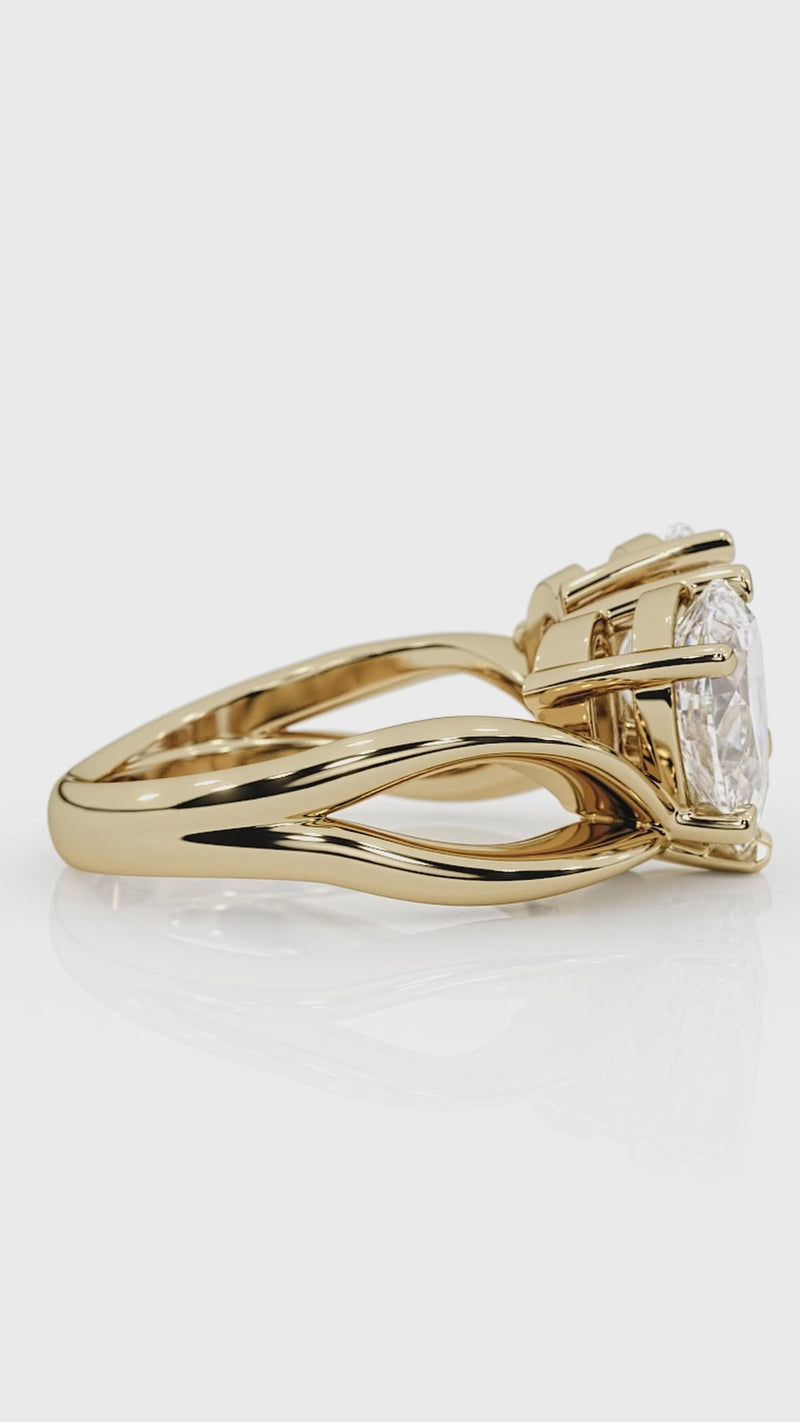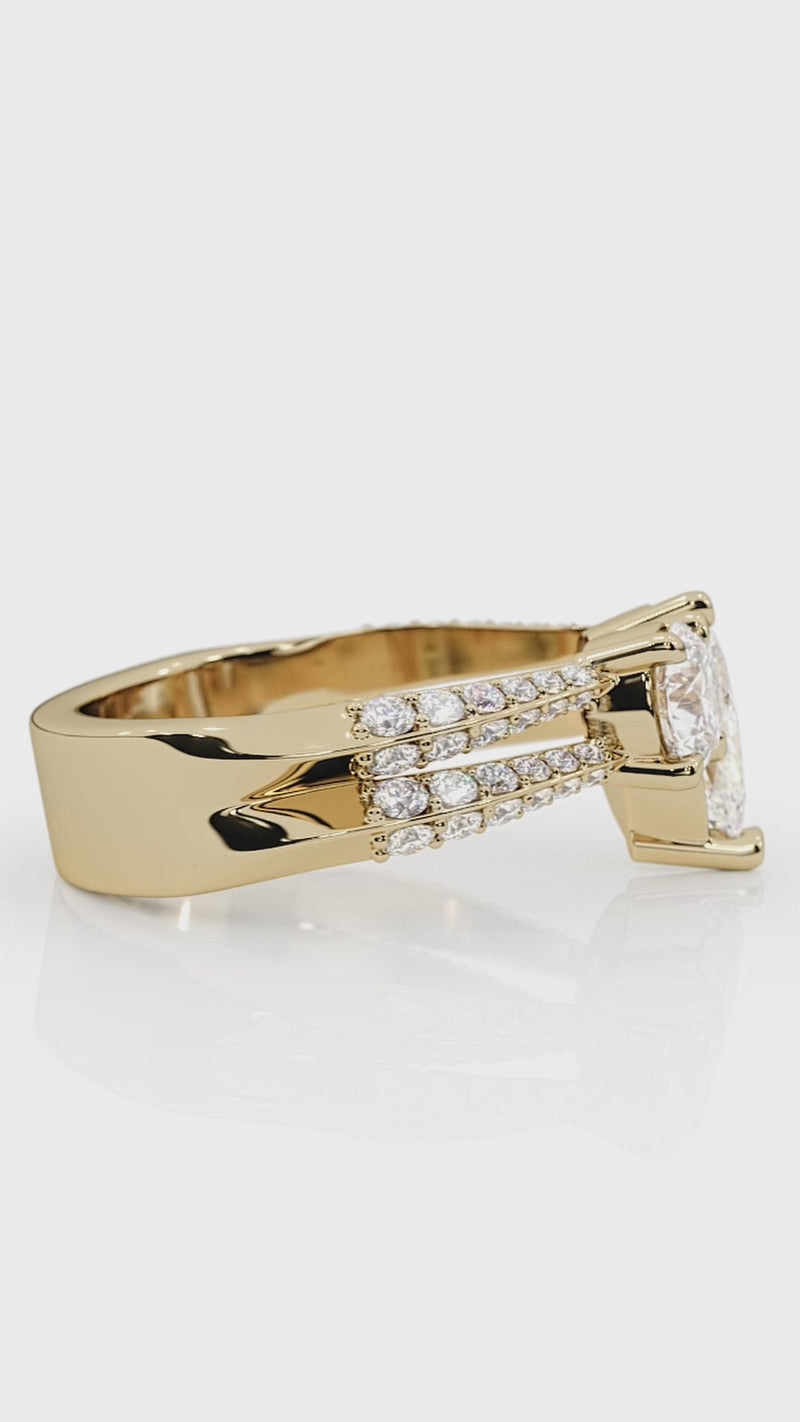4 Cs of a Diamond: Master Your Diamond Knowledge
By Nick Coutu
Table of Contents
- Introduction
- What Are the 4 Cs of a Diamond?
- Carat: The Diamond’s Weight
- Cut: The Key to Sparkle
- Color: From D to Z
- Clarity: The Diamond’s Internal World
- Why the 4 Cs of a Diamond Matter
- How to Evaluate the 4 Cs of a Diamond
- Balancing the 4 Cs of a Diamond
- Product Spotlight
- Summary
- FAQ
Introduction
Buying a diamond can be one of the most important decisions you’ll ever make—both financially and emotionally. If you’ve done even a little bit of research, you’ve likely stumbled upon the term “4 Cs of a diamond.” This framework, created by the Gemological Institute of America (GIA), helps you assess a stone’s overall quality and how it might fit your budget and style preferences. In this comprehensive guide, we’ll explore why the 4 Cs of a diamond are vital for any jewelry purchase. We’ll also offer practical tips for balancing each of these Cs—Carat, Cut, Color, and Clarity—to find a stone that speaks to your heart.
Before we dive in, feel free to explore my other blog posts for more insights on choosing and caring for fine jewelry:
- Cut
- Clarity
- Colour
- Carat
Each post offers a unique perspective to help you become a more informed and confident buyer.
What Are the 4 Cs of a Diamond?
When we talk about the 4 Cs of a diamond, we’re referring to four distinct criteria:
-
Carat: Measurement of the diamond’s weight.
-
Cut: How well the diamond’s facets are shaped and aligned.
-
Color: The degree to which a diamond appears colorless (or tinted).
-
Clarity: The presence or absence of internal inclusions and external blemishes.
Every diamond is unique. Some gems may excel in one C but fall short in another. By understanding these components, you can better compare diamonds and choose one that perfectly aligns with your taste and budget.
Carat: The Diamond’s Weight
Carat is often the first metric that catches a buyer’s attention, as it directly influences size. One carat equals 200 milligrams, and while larger diamonds tend to be more expensive, bigger isn’t always better if other quality factors are lacking.
-
Tip #1: Two diamonds of the same carat weight can appear different in size if one is cut deeper or shallower.
-
Tip #2: Slightly below “magic weights” (like 1 carat) can offer better value without a noticeable difference to the naked eye.
Remember: A one-carat diamond can be almost twice as expensive as a 0.9-carat diamond of similar quality, simply because it hits that coveted “1.00” mark. Always weigh whether the visual difference is worth the cost.
Cut: The Key to Sparkle
The cut grade influences how brilliantly a diamond reflects and refracts light. It’s not the shape (like round or princess) but the precision of the diamond’s proportions and angles that determine its sparkle.
Bold tip: If you want ultimate sparkle, focus on cut even if it means choosing a slightly smaller or lower color/clarity grade. A superbly cut diamond can mask other minor imperfections because it delivers an unforgettable brilliance.
Three Key Aspects of Diamond Cut
-
Brilliance: The light reflected from the diamond.
-
Fire: Those rainbow-colored flashes you see.
-
Scintillation: The pattern of light and dark areas when the diamond moves.
Color: From D to Z
While many people assume diamonds are inherently colorless, most have slight yellow or brown tints. The GIA color scale ranges from D (completely colorless) to Z (noticeably tinted). Diamonds in the D-F range are rare and quite valuable, while those in the G-J near-colorless range offer excellent value and can look very similar to higher color grades to the naked eye. Always consult a jeweller for guidance.
Key Pointers:
-
White Metal Settings (platinum or white gold) may make lower color grades more apparent.
-
Yellow or Rose Gold Settings can mask faint color, allowing you to opt for a lower (and more affordable) color grade without sacrificing appearance.
Clarity: The Diamond’s Internal World
Diamond clarity covers everything from FL (flawless) to I (included). The location, number, and severity of inclusions or blemishes significantly impact the clarity grade. However, most inclusions are microscopic and may not affect a stone’s visual appeal unless you view it under 10x magnification or more.
Simple Strategies:
- Look for diamonds graded in the VS1–SI2 range, as these often appear flawless to the naked eye.
- If an inclusion is tucked away near the edge, it might be easily hidden by prongs in the ring setting.
Why the 4 Cs of a Diamond Matter
You might ask: Why do the 4 Cs of a diamond matter so much? The answer lies in comparability and confidence:
-
Comparability: By standardizing quality, you can compare diamonds from different retailers or labs on an equal playing field.
-
Confidence: Understanding the 4 Cs of a diamond empowers you to make an educated decision and avoid overpaying for qualities you can’t visibly perceive.
The 4 Cs of a diamond serve as a global language, ensuring transparency in pricing and quality.
How to Evaluate the 4 Cs of a Diamond
When considering the 4 Cs of a diamond, evaluate each factor in tandem rather than in isolation. For example, an internally flawless diamond can still appear dull if the cut is poor. Conversely, a diamond with minor inclusions can sparkle brilliantly if the cut is top-notch.
-
Create a priority list: If sparkle is your top priority, focus on cut. If size impresses you, weigh carat more heavily.
-
Check certification: Always look for GIA or AGS certificates to ensure the diamond’s quality claims are legitimate.
Balancing the 4 Cs of a Diamond
Striking the right balance among the 4 Cs of a diamond ensures you get optimum value. Consider these scenarios:
-
Budget-Friendly Option: Slightly reduce color and clarity while maximizing cut for that extra sparkle.
-
Luxury Choice: Go for D-F color and VVS clarity or above, but keep the cut at Excellent or Ideal to maintain brilliance.
-
Sweet Spot: For natural diamonds, aim for a top notch cut, bordering near-colorless (F-G) diamond with VS2–SI1 clarity and see if a carat weight just under a “magic number” (like 1.95, 1.45, or 0.95 carats) offers a better deal.
Remember: Even a single jump in color or clarity grade can significantly affect price. By carefully balancing the 4 Cs of a diamond, you can save money and still own a gorgeous gem.
Time to do some diamond browsing.
If you’re ready to see how these principles apply in real life, check out our Diamond showroom at LCJewellery.com. This page allows you to see the vast number of options you have and ability to narrow down to find your perfect balance of cut, color, carat, and clarity. What do your 4 Cs of a diamond look like? Feel free to send us a message for guidance if you need!
Recommendation: Choosing a certified diamond helps protect your investment and gives you peace of mind about the gem’s specifications, authenticity, and origin.
About Me, Nick Coutu
Hello! I’m Nick Coutu, a passionate second generation jeweler with over 20 years of experience in the diamond industry. My journey began my parents founded Lessard Coutu Jewellery in the same year that I was born. I was raised among sparkling beauty and intricate craftsmanship and lucky for me, diamonds are in my blood. Over the years, I’ve dedicated myself to educating clients, ensuring they feel both informed and confident in their jewelry choices. Through my blog, I aim to simplify complex topics, making them accessible and enjoyable for everyone—from first-time buyers to seasoned collectors.
Summary
The 4 Cs of a diamond—Carat, Cut, Color, and Clarity—aren’t just buzzwords. They form the foundation for understanding a diamond’s quality, beauty, and value. Carat influences weight, Cut determines sparkle, Color ranges from colorless to yellow or brown, and Clarity reflects internal flaws. By balancing these aspects, you can find a diamond that not only fits your budget but also aligns with your unique style. Remember, knowledge is key, and the 4 Cs of a diamond are your roadmap to making an informed purchase that you’ll treasure for a lifetime.
FAQ
-
What is the most important C among the 4 Cs of a diamond?
- Many experts rank Cut as the most critical, because a poor cut can diminish the diamond’s sparkle regardless of other attributes.
-
How does setting affect the 4 Cs of a diamond?
- Settings can enhance or mask certain qualities. For instance, yellow gold may reduce the appearance of color, while a halo setting can make a smaller diamond appear larger.
-
Should I always choose a GIA-certified diamond?
-
Yes, reputable certifications like GIA or AGS ensure that the diamond’s listed 4 Cs are accurate and trustworthy, protecting your investment.
-
What if I have a limited budget?
-
Bold advice: Focus on Cut, and compromise slightly on Color and Clarity. A well-cut diamond can appear more brilliant than a larger, poorly cut gem.
Final note: If you’re looking for more insights, be sure to read my other blog posts:
By exploring these resources, you’ll quickly become an expert on the 4 Cs of a diamond and find the ideal piece that captures your unique story.



: invalid url input -->)


